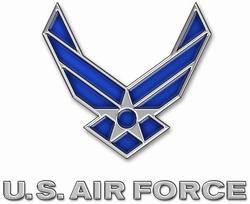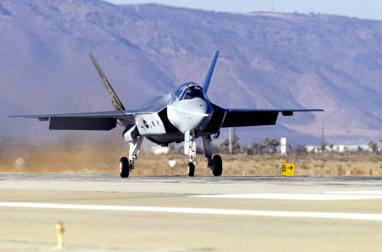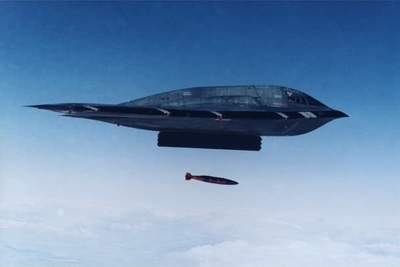Dealing With World Changes
 The global war on terrorism is
placing many stresses on the US Air Force, but the service members
are responding well to those stresses and the leadership is working
to alleviate them.
The global war on terrorism is
placing many stresses on the US Air Force, but the service members
are responding well to those stresses and the leadership is working
to alleviate them.
Chief Master Sgt. of the Air Force Gerald R. Murray -- the
service's highest-ranking enlisted person -- said there are more
than 29,000 airmen deployed around the world today.
Air Force productivity rates are the highest they have ever
been, the chief said in a Pentagon Channel and American Forces
Press Service interview for the Air Force's 57th birthday on Sept.
18.
Yet, stress happens. The Air Force is a critical member of the
joint military team, Murray said. In addition to the normal
stresses of maintaining aircraft and all the other operations
entailed in arming them, manning them and putting them in the air,
the United States is at war. Aircrews are facing the enemy in
Southwest Asia. Other aircrews are hauling critical supplies to the
war fronts. Still other aircrews are maintaining vigilance in the
homeland.
The Air Force is also working as a member of the joint military
team in many non-traditional ways, Murray said. More than 2,000
airmen, for example, are working in Army taskings in Southwest
Asia. Air Force truck drivers and military police are convoying
supplies into Iraq. Air Force engineers are working hand-in-glove
with their Army and Navy compatriots. And air operations around the
world are not only completely joint, but are also flown with
allies.
These missions not only place stresses on the airmen involved,
but also the families at home. Air Force leaders are working to
stay ahead of any problems the stressors might create.
Other changes that also cause stress are more mundane. The Air
Force is fielding a new uniform. The service is changing its
physical-training requirements. And the Air Force is shaping itself
as it faces the new challenges of the 21st century. "As we change
our culture, that creates some stress in our force today," Murray
said.
The Air Force is trimming down and reshaping the force. Some
airmen have to retrain into other Air Force specialties in order to
stay in the service. "There's some unpredictability out there,"
Murray said. "Those all contribute to the stress today that has
given us some indicators, like an increased suicide rate, that has
us alarmed."

The Air Force is confronting these stressors head on. Murray
said that "face-to-face leadership" by young sergeants is key to
helping airmen. "This operations tempo is not going to subside any
time soon," he said. "It must be that we continue to look for ways
to cope with it, because that's what's given to us on our
watch.
"We take that, try to understand it, we take and make sure we
communicate with our people and get to the point where we do not
fail to care for each and every airmen we have."
The chief said the service is looking at the basics. The service
was a groundbreaker in efforts to prevent suicide and plans to
re-examine its suicide-prevention program to see that it still
meets the needs of the Air Force. If it does not, the service will
change it so it does, Murray said.
The same is true of efforts to bolster military family members,
daycare offerings and quality-of-life initiatives for single airmen
and those deployed overseas.
"We're looking back to basics in training," he said "Next month
we'll have our 20th basic training review. We ask ourselves, 'What
is required of today's force? Does our basic military training meet
those needs?' (and) take that through technical training and the
operations as we move our airmen into the force."

The chief said the service wants to ensure support programs are
well-grounded. "It's not creating new programs," he said. "We are
so good at what we do. Our airmen are incredible in the way that
they focus themselves on the mission and capabilities that they
have. We do look after our people well, but at the same time, we
can't rest on that. We must continue to look for ways to be
better."
Murray said the Air Force today is the best he has seen since he
joined the service in 1977. "What drives a young man or woman from
America to come and volunteer and serve today in a time of war?" he
asked. "I see a commitment out of our airmen … today that is
just incredible. Some are saying this is the new 'greatest
generation.' History will decide that. I'll tell you I see a
commitment out of our airmen today that is unlike it was when I
came into the service, and it's great to see."
 ANN FAQ: Contributing To Aero-TV
ANN FAQ: Contributing To Aero-TV Aero-News: Quote of the Day (12.10.25)
Aero-News: Quote of the Day (12.10.25) ANN's Daily Aero-Term (12.10.25): North Atlantic High Level Airspace (NAT HLA)
ANN's Daily Aero-Term (12.10.25): North Atlantic High Level Airspace (NAT HLA) Airborne 12.08.25: Samaritans Purse Hijack, FAA Med Relief, China Rocket Fail
Airborne 12.08.25: Samaritans Purse Hijack, FAA Med Relief, China Rocket Fail Airborne-Flight Training 12.04.25: Ldg Fee Danger, Av Mental Health, PC-7 MKX
Airborne-Flight Training 12.04.25: Ldg Fee Danger, Av Mental Health, PC-7 MKX





